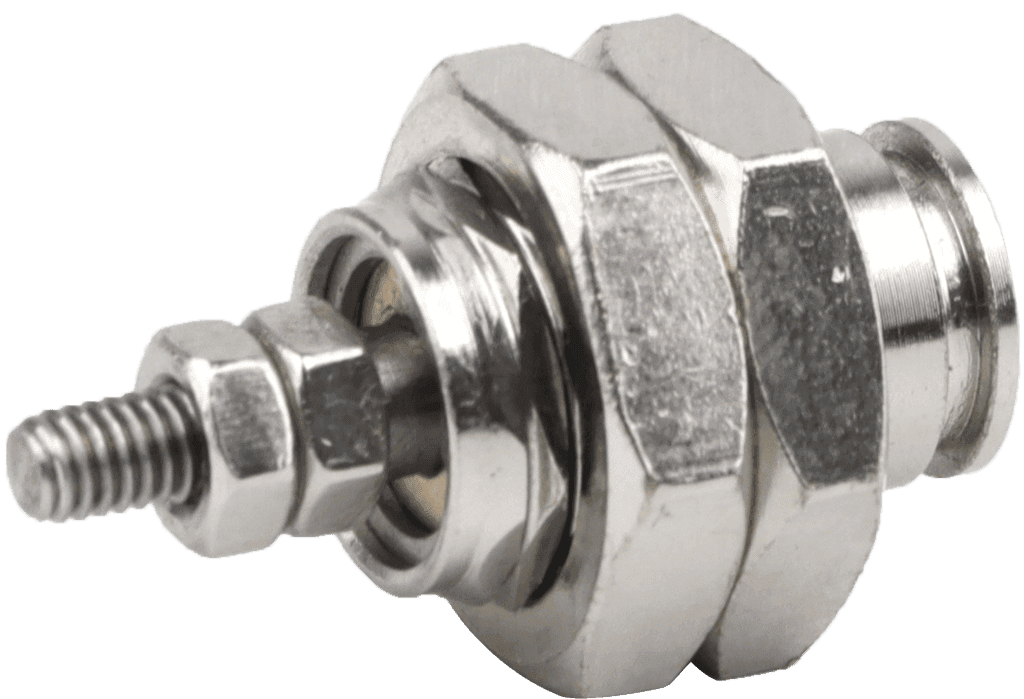Common Failure Symptoms of Hydraulic Cylinders
In hydraulic systems, hydraulic cylinders are key components, but they often have various faults, such as abnormal noise, unstable movement, overheating, reduced speed and power, leakage, uneven wear, drift, etc.
This article will briefly introduce these faults and their causes to help you effectively maintain the hydraulic system.
Abnormal noises
Abnormal noises from hydraulic cylinders, such as knocking, banging, or hissing, are often caused by air trapped in the hydraulic fluid, loose components, or internal damage.
Air in the hydraulic system creates compressible bubbles that can cause noise during operation.Loose components, such as bolts or seals, can also cause noise due to vibration.
Regular maintenance and proper bleeding of the hydraulic system can prevent abnormal noise and ensure smooth operation.
Unstable or jerky movement
Unstable or jerky movement of a hydraulic cylinder can be caused by internal leaks, contamination in the hydraulic fluid, or worn components.
Internal leaks can reduce the efficiency of a hydraulic system and cause uneven movement. Contaminants in the fluid can clog valves and restrict flow, causing jerky movements.
Ensuring that the hydraulic fluid is clean and regularly checking internal components can help keep the cylinder moving smoothly and consistently.
Overheating
Overheating of a hydraulic cylinder is a great indicator of failure. This can be caused by excessive friction, high operating pressure, or contamination of the hydraulic fluid.
Overheating can damage seals and other components, leading to further problems. Regularly monitoring operating temperatures and maintaining proper fluid levels can help prevent overheating.
Using the correct type of hydraulic fluid for the application can reduce the risk of overheat buildup.
Reduced Speed and Power
A noticeable reduction in the speed and power of a hydraulic cylinder can be caused by internal leaks, worn components, or hydraulic fluid problems.
Internal leaks can cause a loss of pressure, which reduces the cylinder’s ability to move effectively. Worn components, such as seals or valves, can also restrict movement.
Ensuring that worn components are replaced promptly and proper fluid levels are maintained can help maintain cylinder performance.

Visible Fluid Leaks
Visible fluid leaks around a hydraulic cylinder are a clear sign of failure. Leaks can be caused by damaged seals, worn components, or cracks in the cylinder body. Fluid leaks not only reduce the efficiency of the hydraulic system, but can also be harmful to the environment.
Immediate attention and repair of leaks are essential to prevent further damage and maintain system efficiency. Regular inspection of seals and components can help detect and resolve leaks early.
Uneven Rod Wear or Damage
Uneven rod wear or damage can be caused by misalignment, improper lubrication, or excessive side loads. Misalignment causes uneven pressure distribution on the piston rod, which accelerates wear. Improper lubrication increases friction, causing damage to the rod surface.
Regular inspections and alignment checks, along with proper lubrication, can prevent uneven wear and extend the life of your cylinder.
Drifting or creeping cylinders
A hydraulic cylinder that drifts or creeps when in a stationary position most likely has an internal leak or a control valve problem. This symptom indicates a loss of fluid pressure within the cylinder.
An internal leak allows hydraulic fluid to bypass the piston seal, causing the cylinder to move unexpectedly. Problems with the control valve can also cause pressure imbalances.
Resolving internal leaks and ensuring valve integrity can resolve drift issues and keep your cylinder running smoothly.
Rising Electricity Bills
Is your electricity bill going up? When you have problems with your hydraulic cylinder, you may notice the problem when you check your electric bill or fuel usage and see higher numbers than usual.
When there are internal or external leaks and increased friction, the system requires more energy to operate.
Simply put, the hydraulic pump needs to work harder, delivering more fluid to overcome the leak.

FAQs
1.How to diagnose a hydraulic problem?
Watch for symptoms such as unusual cylinder noises, irregular movement, slow operation, increased energy consumption, overheating, “shivers”, actuator slowdowns, and increased electricity bills.
2.How do I know if my hydraulic cylinder is bad?
Check for unusual noises, irregular movement, oil leaks, piston rod wear, and increased electricity bills.
3.What are the most common seal failures in hydraulic cylinders?
Seal damage caused by high temperatures, fluid contamination, pressure spikes, piston rod scoring, etc., leads to hydraulic oil leaks.
4.What are the symptoms of bad hydraulic oil?
Slow system operation, increased energy consumption, component wear, oil deterioration, port blockage, and seal damage. Regular oil and filter changes can prevent these problems.
Conclusion
Hydraulic cylinder failure affects equipment operation and maintenance costs.
By identifying common failure symptoms, understanding the causes, and taking preventive measures such as regular maintenance and using high-quality hydraulic oil, you can reduce the occurrence of failures and ensure efficient operation of equipment.
Good maintenance habits are the key to ensuring stable operation of hydraulic systems.



